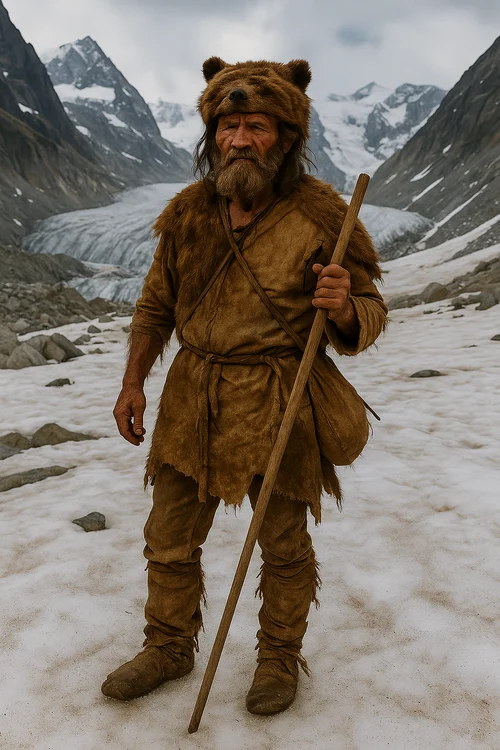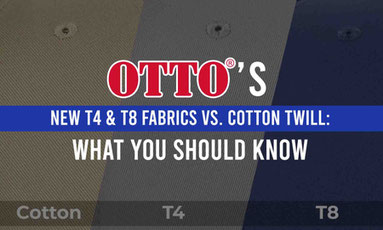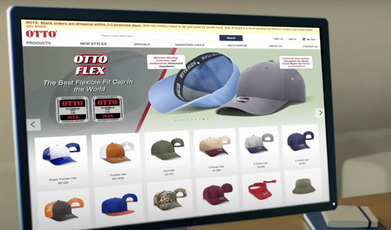The OTTO CAP Blog
Stay informed and inspired as we share updates, innovations, and success stories from the world of promotional headwear.
Let’s take a moment to tip our hats (literally, in this case) to one of the most underrated fashion statements in human history.
Hats have been keeping heads warm, shaded, stylish, comfortable, and sometimes even just plain weird for thousands of years.
Nowadays you might toss on a beanie to hide a bad hair day or grab your favorite team's cap before a baseball game, but have you ever wondered what the story behind headwear is?
Well, it's a whole lot longer (and more delightful) than you might think.
Ancient Heads, Covered In Style
 The oldest known hat-wearer on record? That would be Ötzi the Iceman, who was frozen into a glacier around 3300 BCE and discovered in the Alps back in the 1990s. Ötzi was sporting a rather no-nonsense fur cap that was made from bear and deer hide, and it was also stitched together with sinew and held on with a chin strap. It was rugged, practical, and designed to keep the human head warm while traversing over freezing mountain passes.
The oldest known hat-wearer on record? That would be Ötzi the Iceman, who was frozen into a glacier around 3300 BCE and discovered in the Alps back in the 1990s. Ötzi was sporting a rather no-nonsense fur cap that was made from bear and deer hide, and it was also stitched together with sinew and held on with a chin strap. It was rugged, practical, and designed to keep the human head warm while traversing over freezing mountain passes.Egyptians used linen head coverings like the khat or nemes that you see worn by pharaohs and high priests alike.
Farmers and laborers in Ancient Egypt wore simple woven straw hats, which were like early versions of today’s wide-brimmed sun hats and were perfect for working the fields under that unforgiving Nile Valley sun.
Let’s take a trip into the history of hats:
The Middle Ages
By the medieval era, your hat wasn’t just about keeping your face protected from the sun. It was more like your social résumé. The taller and more elaborate your hat was, the higher your status was too.
In 15th-century France and Burgundy, for instance, the noblewomen wore hennins. Some were so tall that they had to duck through doorways.
Knights and nobles usually wore elaborate chaperons and coifs, while peasants stuck with practical felt or straw caps.
16th-18th Centuries
In the 1600s, you’ve got feathers, velvet, and enough brim to shade half your face. Cavalier hats were the must-have item for gentlemen with flair.
The tricorne hat arrived on the scene by the 1700s. This was a three-cornered hat that were often worn by military officers and early American statesmen. The folded brims helped channel rainwater away from the face.
19th Century
In the 1800s, hats were practically required. The top hat dominated upper-class fashion—often made of beaver felt.
Working folks wore bowlers, invented in 1849 by London hatmakers Thomas and William Bowler to protect gamekeepers. Newsboys and factory workers wore flat caps.
Hat-making became a booming business.
20th Century
In the early 1900s, hats had basically become a part of our daily dress! Women wore cloche hats in the 1920s that were bell-shaped and designed to go with bobbed hair. Men, meanwhile, usually wore fedoras, homburgs, Irish flat caps, and straw boaters.
As cars became common, tall hats simply became impractical. Post-WWII fashion got more casual and hats faded from daily wear. By the 1960s, going hatless was no longer scandalous since only certain professions and ceremonies still really required headwear.

Previous Blog
OTTO’s New T4 & T8 Fabrics vs. Cotton Twill: What You Should Know
Next Blog
How to Design the Perfect Custom Hat for Your Brand

Recent Posts
Your source for insights on premium headwear manufacturing, industry trends, marketing tips, and business strategies.
Write Your Comments

